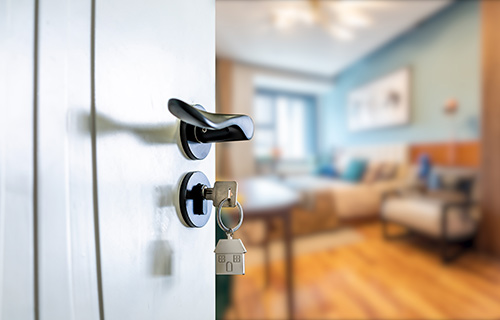
Spring has sprung, and with the change of season, our thoughts turn to spring cleaning and much-needed home improvement projects. Before you embark on seasonal chores or outdoor revelry, take inventory of potential springtime hazards for your furry friends.
*If you suspect your pet may have come in contact with or ingested a potentially poisonous substance, contact your local veterinarian or the ASPCA Animal Poison Control Center immediately at (888) 426-4435.
Easter Treats and Decorations
Keep lilies and candy in check—chocolate goodies are toxic to cats and dogs, and all true lilies can be fatal if ingested by cats. And be mindful, kitties love to nibble on colorful plastic grass, which can lead to an obstructed digestive tract, severe vomiting and dehydration. Moreover, while live bunnies, chicks and other festive animals are adorable, resist the urge to buy them—these cute babies grow up fast and often require specialized care!
Screen Yourself
Many pet parents welcome the breezy days of spring by opening their windows. Unfortunately, they also unknowingly put their pets at risk—especially cats, who are apt to jump or fall through unscreened windows. Be sure to install snug and sturdy screens in all of your windows.
Buckle Up!
While most dogs love to feel the wind on their furry faces, allowing them to ride in the beds of pick-up trucks or stick their heads out of moving-car windows is dangerous. Flying debris and insects can cause inner ear or eye injuries and lung infections, and abrupt stops or turns can cause major injury, or worse! Pets riding in cars should always be secured in a crate or wearing a seatbelt harness designed especially for them.
Spring Cleaning
Spring cleaning is a time-honored tradition in many households, but be sure to keep all cleaners and chemicals out of your pets’ way! Almost all cleaning products, even all natural ones, contain chemicals that may be harmful to pets. The key to using them safely is to read and follow label directions for proper use and storage.
Home Improvement 101
Products such as paints, mineral spirits and solvents can be toxic to your pets and cause severe irritation or chemical burns. Carefully read all labels to see if the product is safe to use around your furry friends. Also, be cautious of physical hazards, including nails, staples, insulation, blades and power tools. It may be wise to confine your dog or cat to a designated pet-friendly room during home improvement projects.
Let Your Garden Grow—With Care
Pet parents, take care—fertilizers, insecticides and herbicides keep our plants and lawns healthy and green, but their ingredients may be dangerous if your pet ingests them. Always store these products in out-of-the-way places and follow label instructions carefully. Many popular springtime plants—including rhododendron and azaleas—are also highly toxic to pets and can prove fatal if eaten.
Ah-Ah-Achoo!
Like us, pets can be allergic to foods, dust, plants and pollens. Allergic reactions in dogs and cats can cause itching, minor sniffling and sneezing, or life-threatening anaphylactic shock to insect bites and stings. If you suspect your pet has a springtime allergy, please visit your veterinarian as soon as possible.
Pesky Little Critters
April showers bring May flowers—and an onslaught of bugs! Make sure your pet is on year-round heartworm preventive medication, as well as a flea and tick control program. Ask your doctor to recommend a plan designed specifically for your pet.
Out and About
Warmer weather means more trips to the park, longer walks and more chances for your pet to wander off! Make sure your dog or cat has a microchip for identification and wears a tag imprinted with your home address, cell phone and any other relevant contact information.





